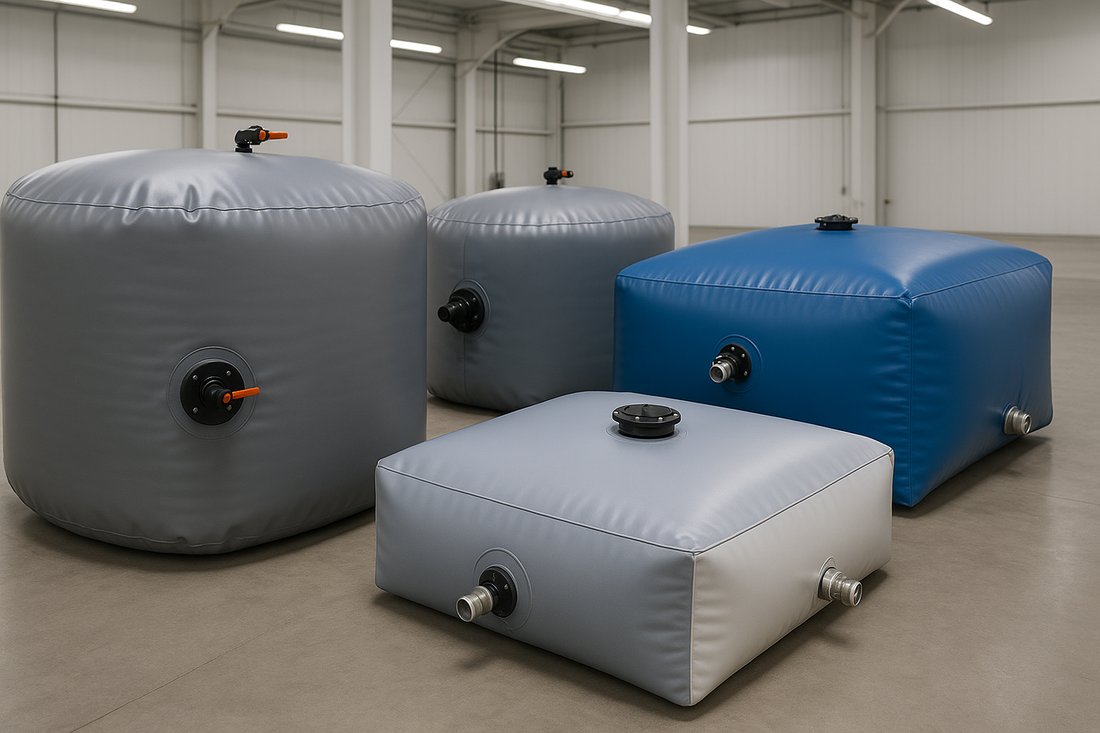
Flexible Fabric Tanks vs Traditional Storage Tanks: Which Is Right for You?
Share
In industries where liquid storage is essential—such as agriculture, mining, construction, humanitarian aid, and emergency response—the choice of storage solution can significantly impact efficiency, mobility, and cost. Traditionally, steel or concrete tanks have been the go-to option, but with the growing demand for lightweight, eco-friendly, and deployable alternatives, flexible fabric tanks are emerging as a reliable solution.
As a leader in coated technical fabrics, uctextile explores the key differences between flexible fabric tanks and traditional rigid tanks, helping you choose the best solution for your application.
1. Structure & Material Composition
Flexible Fabric Tanks are made from high-performance materials such as PVC, TPO, or TPU coated fabrics. They are designed to be collapsible, lightweight, and quick to install. These tanks consist of textile-reinforced layers and are sealed using hot air or high-frequency welding to ensure leak-proof performance.
In contrast, Traditional Storage Tanks are typically made of steel, concrete, or fiberglass. They are rigid, heavy, and require permanent or semi-permanent installation with foundation work and mechanical assembly.
2. Installation and Mobility
Flexible tanks can be deployed within minutes, without the need for heavy machinery or groundwork. They are ideal for remote areas, temporary installations, and emergency relief, offering unparalleled portability and ease of setup.
Traditional tanks, however, require significant time, labor, and infrastructure to install, making them more suitable for permanent installations such as municipal water storage or industrial facilities.
3. Cost and Maintenance
From production to transportation and maintenance, flexible tanks are far more cost-effective. The lightweight nature means lower shipping costs, no need for cranes or special handling, and minimal site preparation. Their modularity also allows for easy repair and replacement of parts.
On the other hand, rigid tanks involve higher initial costs, complex logistics, and often need anti-corrosion treatments, especially in outdoor or chemical environments.
4. Application Scenarios
| Flexible Fabric Tanks |
Traditional Rigid Tanks |
| Agriculture (irrigation, rainwater) | Large-scale municipal water supply |
| Military & disaster relief | Permanent fuel or chemical storage |
| Construction site water or diesel tanks | Fixed industrial systems |
| Remote mining camps | Urban water treatment plants |
| Humanitarian missions | Fire water storage for buildings |
5. Environmental Advantage
uctextile’s TPO-coated fabric tanks are PVC-free, recyclable, and produced with extrusion coating technology—offering a truly sustainable solution. These tanks reduce the carbon footprint in production, logistics, and end-of-life disposal, aligning with the global move toward greener materials.
Conclusion
If your project demands mobility, quick deployment, space-saving storage, or cost efficiency, flexible fabric tanks by uctextile provide a future-forward solution without compromising performance. For more permanent, large-scale storage needs, traditional tanks may still hold value.
With years of experience in technical membrane development, uctextile is proud to support global industries with high-performance, durable, and sustainable flexible storage solutions.
📩 Interested in custom solutions?
Contact our team to learn more about tailored flexible tank fabrics, including flame-retardant, UV-resistant, and chemical-resistant options.
